Uncover the secrets of Egypt’s diverse climate and plan your perfect adventure with our comprehensive weather guide. From the sun-drenched shores of the Red Sea to the ancient wonders of Luxor, discover when to visit, what to pack, and how to make the most of Egypt’s year-round allure. Whether you are a history buff, beach lover or desert explorer, our expert insights will ensure your Egyptian odyssey is timed to perfection. Do not let unpredictable weather dampen your spirits – let our guide illuminate the path to an unforgettable journey through the Land of the Pharaohs.
Unravelling the Mysteries of Egypt’s Climate
The Timeless Allure of Ancient Egypt
Picture this: the golden sun casting long shadows across the Great Pyramids, while a warm breeze carries whispers of ancient tales along the Nile River. Egypt, a land where history and mystery intertwine, beckons travellers with its irresistible charm. But to truly unlock the secrets of this enigmatic destination, one must first decipher the intricate patterns of its climate.
BOOKING YOUR 2025 EGYPT TRIP JUST GOT EASIER!
EVERYTHING YOU NEED TO KNOW ABOUT BOOKING FLIGHTS AND HOTELS. AVOID COSTLY MISTAKES WITH OUR COMPREHENSIVE GUIDE
A Land of Stark Contrasts
Egypt’s landscape defies simple categorisation, presenting a captivating array of environments:
- The lush Nile Delta in the north.
- The vast, arid expanses of the Sahara Desert in the south.
- The balmy Mediterranean coast.
- The sun-drenched shores of the Red Sea.
Each of these distinct regions boasts its own microclimate, offering visitors a diverse range of experiences and challenges.
Why Weather Matters for Your Egyptian Adventure
Understanding the weather in Egypt is not merely a matter of comfort – it is the key to unlocking the full potential of your journey. Consider the following:
- Timing is everything: The difference between a challenging expedition and a seamless adventure often comes down to when you choose to visit.
- Activity planning: Whether you dream of exploring ancient temples or diving in the Red Sea, the weather will play a crucial role in your experience.
- Packing appropriately: Knowing what to expect allows travellers to prepare adequately for their journey.
What This Guide Will Cover
In this comprehensive exploration of Egypt’s climate, readers will discover:
- Seasonal variations: From the scorching embrace of summer to the mild caress of winter.
- Regional climate differences: Insights into the unique weather patterns of iconic destinations such as Cairo, Alexandria, Luxor, Hurghada, Marsa Alam and Sharm El Sheikh.
- Optimal timing for activities: When to visit for specific adventures, from pyramid exploration to desert safaris.
- Practical tips and expert advice: Ensuring travellers are well-prepared for Egypt’s diverse weather conditions.
Planning to travel within between different cities? Have a look at our review on Egyptair!
EGYPTAIR DOMESTIC CONNECTIONS
Experience Comfort and Convenience: Discover Our Egyptair 737 Domestic Business Class Review
Embracing Egypt’s Climatic Rhythms
Just as the ancient Egyptians looked to the skies to guide their lives and rituals, modern travellers must understand the rhythms of Egypt’s climate to fully appreciate its wonders. This guide serves as a compass, directing the way through the fascinating weather patterns of this timeless land. Whether one seeks the intense heat of a summer adventure or the mild comfort of a winter exploration, Egypt’s diverse climate offers something for every traveller. By aligning your journey with the ebb and flow of Egypt’s seasons, visitors can transform their trip from a mere vacation into an unforgettable odyssey through time and nature.
Egypt Weather: Decoding the Seasons
The Dual Nature of Egypt’s Climate
Egypt’s climate, much like its ancient history, presents a fascinating duality. The country experiences two primary seasons, each offering a distinct array of experiences for travellers. Understanding these seasonal shifts is crucial for planning the best Egyptian adventure.
The Two Faces of Egypt’s Weather
- Hot Season: May to September
- Mild Season: October to April
Between these two main seasons, Egypt experiences brief transitional periods, offering a unique blend of climatic conditions.
Egypt’s Climate at a Glance
| Season | Months | Temperature (°C) | Rainfall | Key Characteristics |
|---|---|---|---|---|
| Hot Season | May – September | Daytime highs often exceeding 40°C (104°F), especially inland. Nighttime lows rarely below 20°C (68°F). Coastal areas slightly milder due to sea breezes. | Very low rainfall throughout the country. | Extremely hot and dry, with the potential for Khamaseen winds (hot, dry, sand-laden winds) between March and May. Ideal for Red Sea diving and enjoying fewer crowds. |
| Mild Season | October – April | Daytime highs typically 20-25°C (68-77°F). Evenings cool, with lows of 10-15°C (50-59°F). Desert regions experience more extreme temperature fluctuations. | Slight chance of rainfall, mainly in the northern regions. Alexandria and the Mediterranean Coast may see occasional showers. Cairo and Southern Egypt receive very little. | The most comfortable time to visit for most activities, with pleasant temperatures for exploring ancient sites, cruising the Nile, and enjoying desert adventures. |
| Shoulder Seasons | March – April & September – October | Temperatures typically range from 20°C to 30°C (68°F to 86°F). | While still rare, there is a slightly higher chance of brief showers, particularly in coastal areas. Spring can bring the Khamaseen winds. | Offer a blend of comfortable temperatures, fewer crowds, and unique photographic opportunities with softer light. |
The Shoulder Seasons: A Time of Balance and Beauty
The shoulder seasons in Egypt offer a perfect balance for travellers seeking comfortable weather and fewer crowds. These periods allow visitors to experience the country’s wonders in a more relaxed atmosphere, providing a unique perspective on the Land of the Pharaohs. Whether you are exploring the bustling streets of Cairo, cruising the timeless Nile, or venturing into the vast deserts, spring and autumn in Egypt promise an unforgettable journey. These seasons blend the best aspects of Egypt’s climate, creating an ideal backdrop for those looking to immerse themselves in the country’s rich history and vibrant culture.
Best Time to Visit for Specific Activities
Having explored Egypt’s diverse climate patterns and seasons, it is evident that the timing of your visit can profoundly shape your experience. Now, let us examine the ideal periods for various activities, ensuring you make the most of your Egyptian adventure.
Desert Exploration: Embracing the Sahara
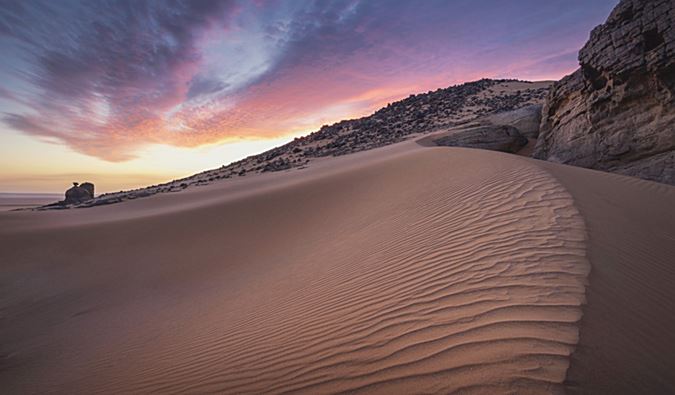
- Best Period: November to February.
- Why: Cooler temperatures make desert exploration more comfortable and enjoyable.
- Activities: Camel treks, stargazing and visits to remote oases are particularly enchanting during this time.
Beach and Water Activities: Red Sea Delights
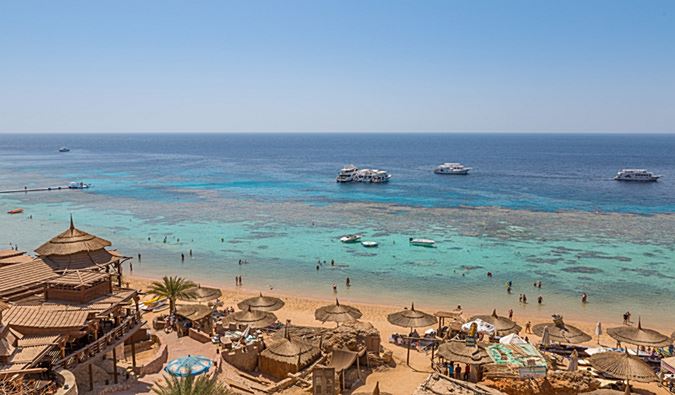
- Peak Season: June to September.
- Advantages: Warm waters and excellent visibility for diving and snorkelling.
- Activities: Scuba diving, snorkelling, and beach relaxation in resorts like Sharm El-Sheikh and Hurghada.
HONEST REVIEW: IS JAZ CASA DEL MAR BEACH WORTH YOUR STAY?
Unbiased insights on comfort, service and value. Read our detailed review of JAZ CASA DEL MAR BEACH to make an informed decision for your next trip. Real experiences, no fluff – just the facts you need.
Cultural Exploration: Ancient Wonders
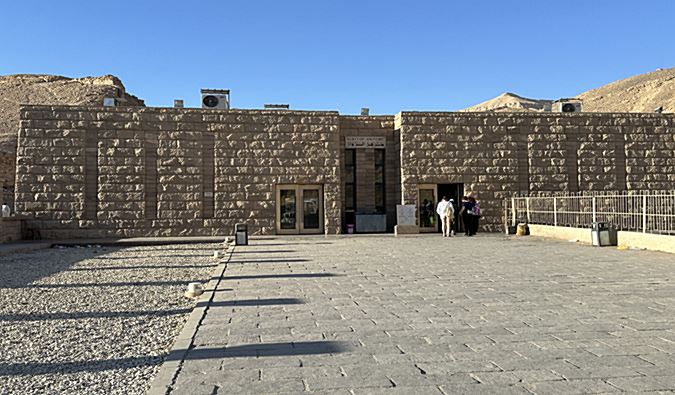
- Ideal Time: October to April.
- Benefits: Milder temperatures make exploring outdoor archaeological sites more comfortable.
- Key Sites: The Pyramids of Giza, Luxor Temple, and the Valley of the Kings are best visited during these cooler months.
Nile Cruises: Sailing Through History

- Optimal Period: October to April.
- Advantages: Pleasant temperatures for on-deck relaxation and shore excursions.
- Highlights: Visits to riverside temples, birdwatching, and stunning sunsets over the Nile.
Urban Exploration: Discovering Cairo and Alexandria
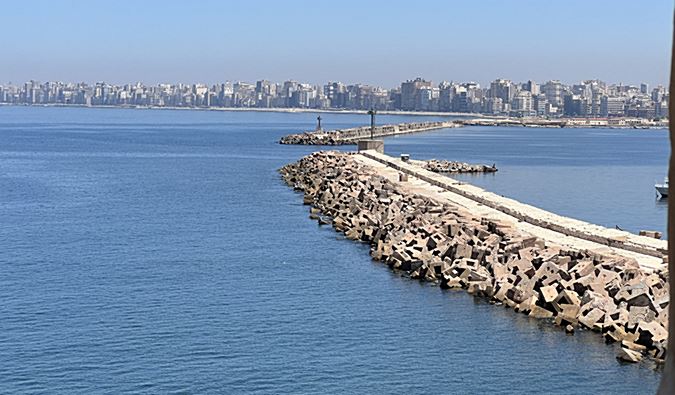
- Best Time: November to March.
- Why: Cooler temperatures make walking tours and outdoor markets more enjoyable.
- Activities: Exploring the Egyptian Museum, wandering through Khan El Khalili bazaar, and visiting the Bibliotheca Alexandrina.
Photography Enthusiasts: Capturing Egypt’s Beauty
- Golden Hours: Spring (March-April) and Autumn (September-October).
- Advantages: Softer light and fewer crowds at popular sites.
- Subjects: Ancient monuments, desert landscapes and vibrant street scenes.
Festival Goers: Cultural Immersion
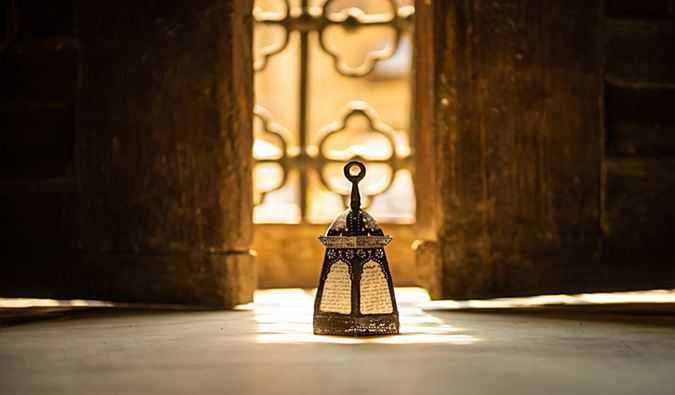
- Abu Simbel Sun Festival: February and October.
- Ramadan: Dates vary annually (a unique cultural experience, though some services may be limited).
- Coptic Christmas: January 7th.
- Orthodox Easter: Dates vary annually.
Budget Travellers: More for Less
- Low Season: May to September.
- Benefits: Lower prices on accommodations and fewer crowds at major attractions.
- Considerations: Be prepared for high temperatures, especially in Upper Egypt.
Tailoring Your Visit to Your Interests
When planning your Egyptian adventure, consider:
- Your Primary Interests: Whether it is history, nature, or culture.
- Your Tolerance for Heat: Summer can be challenging for those unused to high temperatures.
- The Balance of Comfort and Crowds: Shoulder seasons often offer the best of both worlds.
By aligning your visit with the optimal times for your preferred activities, you can ensure a truly unforgettable Egyptian experience. Whether you are diving in the Red Sea, exploring ancient tombs or cruising down the Nile, timing your visit right will enhance every aspect of your journey through this timeless land.
Regional Variations: Egypt’s Microclimates Unveiled
Egypt’s diverse geography gives rise to distinct microclimates, each offering a unique experience for travellers. Let us explore these regional variations to help you better plan your Egyptian adventure.
| Region | Summer Temperatures | Winter Temperatures | Rainfall | Other Climatic Features |
| Northern Coast Alexandria, Marsa Matruh, Baltim | 🌡️ 23-31°C | 🌡️ 10-20°C | 🌧️ Relatively high, especially in winter (100-200 mm annually) | 💨 Moderated by the Mediterranean Sea, creating a more comfortable climate year-round. Pack layers for cooler evenings. Light jacket for winter. |
| Nile Valley & Delta Cairo, Luxor, Aswan, Asyut, Beni Suef | 🌡️ 19-35°C+ | 🌡️ 9-20°C | 💧 Very low (Cairo: <25 mm annually) | 💧 High humidity, especially in winter. The Nile River influences local climate patterns, creating a fertile strip of land. Lightweight, breathable clothing is recommended year-round. A light jacket or sweater is useful for cooler evenings, especially in winter. |
| Red Sea Coast Hurghada, El Gouna, Marsa Alam | 🌡️ 33-37°C+ | 🌡️ 14-24°C | 💧 Very low (<10 mm annually) | ☀️ Extremely sunny (over 3,800 hours annually). Low humidity makes high summer temperatures feel more bearable. Ideal for beach holidays and water sports throughout the year. Lightweight, breathable clothing is perfect. A light jacket or shawl might be needed for cooler evenings. |
| Western Desert Siwa Oasis, Farafra Oasis, Bahariya Oasis, Dakhla Oasis | 🌡️ 30-40°C+ | 🌡️ Can approach freezing at night | 💧 Extremely rare, some areas receive almost no precipitation. | 🏜️ Classic desert climate with extreme temperature fluctuations between day and night. Lightweight, breathable clothing for daytime. Warm layers, including a jacket, are essential for the chilly desert nights. Sturdy shoes are a must for exploring. |
| Sinai Peninsula (Coastal) Sharm El-Sheikh, Dahab, Taba, Nuweiba | 🌡️ 19-36°C+ | 🌡️ 12-24°C | 💧 Very low (<10 mm annually) | ☀️ Similar to the Red Sea Coast. Extremely sunny. Low humidity. |
| Sinai Peninsula (Mountains) Saint Catherine, Mount Sinai | 🌡️ Cooler, can see ice in winter | 🌡️ 16°C (Mt. Sinai), can be much colder | 🌧️ More than lowlands, supports unique ecosystems. | ⛰️ Mountainous interior experiences cooler temperatures, especially at night. Climate change leading to decreasing rainfall and rising temperatures. Layering is key. A warm jacket is essential, and you might even need a hat and gloves if you are hiking at higher elevations in winter. Sturdy shoes are important for hiking. |
| Upper Egypt Luxor, Aswan, Edfu, Kom Ombo | 🌡️ 20-40°C+ | 🌡️ 7-33°C | 💧 Very low (<5 mm annually) | 🔥 Extremely hot summers, especially in Luxor and Aswan. Lightweight, loose-fitting clothing in light colours is best. A hat, sunglasses, and sunscreen are essential for protection from the strong sun. In winter, a light jacket or sweater might be needed for the cooler evenings. |
Best Time to Visit Egypt: Month by Month Weather
| Region | Jan | Feb | Mar | Apr | May | Jun | Jul | Aug | Sep | Oct | Nov | Dec |
| Northern Coast 🌊 Alexandria, Marsa Matruh, Baltim | 19° / 10° 🌧️ | 20° / 11° 🌧️ | 22° / 13° 🌦️ | 25° / 15° 🌤️ | 28° / 18° ☀️ | 30° / 21° ☀️ | 31° / 23° ☀️ | 31° / 23° ☀️ | 29° / 21° ☀️ | 27° / 18° 🌤️ | 24° / 15° 🌦️ | 21° / 12° 🌧️ |
| Nile Valley & Delta 🏞️ Cairo, Luxor, Aswan, Asyut, Beni Suef | 19° / 09° ☀️ | 21° / 10° ☀️ | 24° / 13° ☀️ | 28° / 16° ☀️ | 32° / 19° ☀️ | 34° / 22° ☀️ | 35° / 23° ☀️ | 35° / 23° ☀️ | 33° / 21° ☀️ | 29° / 18° ☀️ | 25° / 14° ☀️ | 21° / 11° ☀️ |
| Red Sea Coast 🏖️ Hurghada, El Gouna, Marsa Alam | 24° / 14° ☀️ | 25° / 15° ☀️ | 27° / 17° ☀️ | 30° / 19° ☀️ | 33° / 22° ☀️ | 36° / 25° ☀️ | 37° / 27° ☀️ | 37° / 27° ☀️ | 35° / 25° ☀️ | 32° / 22° ☀️ | 28° / 19° ☀️ | 25° / 16° ☀️ |
| Western Desert 🏜️ Siwa Oasis, Farafra Oasis, Bahariya Oasis, Dakhla Oasis | 20° / 05° ☀️ | 23° / 07° ☀️ | 27° / 10° ☀️ | 32° / 14° ☀️ | 36° / 18° ☀️ | 39° / 22° ☀️ | 40° / 23° ☀️ | 40° / 23° ☀️ | 37° / 20° ☀️ | 33° / 15° ☀️ | 27° / 10° ☀️ | 22° / 07° ☀️ |
| Sinai (Coastal) 🏝️ Sharm El-Sheikh, Dahab, Taba, Nuweiba | 22° / 12° ☀️ | 24° / 13° ☀️ | 26° / 15° ☀️ | 29° / 18° ☀️ | 32° / 21° ☀️ | 35° / 24° ☀️ | 36° / 26° ☀️ | 36° / 26° ☀️ | 34° / 24° ☀️ | 31° / 21° ☀️ | 27° / 17° ☀️ | 24° / 14° ☀️ |
| Sinai (Mountains)⛰️ Saint Catherine, Mount Sinai | 10° / 02° ☀️ | 12° / 03° ☀️ | 15° / 06° ☀️ | 19° / 09° ☀️ | 23° / 12° ☀️ | 26° / 15° ☀️ | 27° / 17° ☀️ | 27° / 17° ☀️ | 25° / 14° ☀️ | 21° / 11° ☀️ | 16° / 07° ☀️ | 12° / 04° ☀️ |
| Upper Egypt☀️ Luxor, Aswan, Edfu, Kom Ombo | 21° / 07° ☀️ | 24° / 09° ☀️ | 28° / 12° ☀️ | 33° / 16° ☀️ | 37° / 20° ☀️ | 40° / 23° ☀️ | 41° / 25° ☀️ | 41° / 24° ☀️ | 38° / 22° ☀️ | 34° / 18° ☀️ | 28° / 13° ☀️ | 23° / 09° ☀️ |
Alexandria and the Northern Coast: Mediterranean Charm
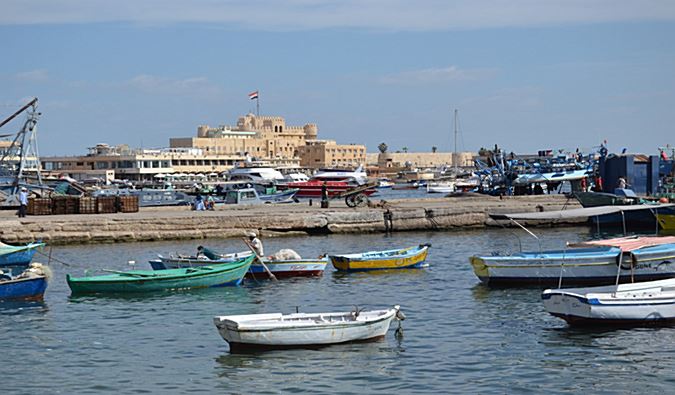
The northern coast of Egypt, including the historic city of Alexandria, enjoys a Mediterranean climate. During our visit to Alexandria in late September, we were pleasantly surprised by the mild Mediterranean climate. The sea breeze made afternoon walks along the Corniche delightful, and we even needed a light jacket for evening strolls by the harbour. The Mediterranean Sea moderates temperatures, making this region more comfortable year-round compared to inland areas.
Alexandria Sea Temperature By Month (2020-2023)
| ALEXANDRIA SEA TEMPERATURE BY MONTH (2020-2023) | |||||
| Month | 2023 | 2022 | 2021 | 2020 | Average |
| Jan | 19.8°C | 18.2°C | 19.5°C | 18.6°C | 19.03°C |
| Feb | 18.5°C | 16.9°C | 18.1°C | 17.3°C | 17.70°C |
| Mar | 18.4°C | 16.4°C | 17.6°C | 17.0°C | 17.35°C |
| Apr | 18.8°C | 17.9°C | 18.3°C | 18.0°C | 18.25°C |
| May | 20.4°C | 20.5°C | 22.1°C | 21.0°C | 21.00°C |
| Jun | 23.5°C | 24.5°C | 24.3°C | 23.4°C | 23.93°C |
| Jul | 27.0°C | 26.4°C | 27.3°C | 26.1°C | 26.70°C |
| Aug | 28.2°C | 27.7°C | 28.4°C | 27.7°C | 28.00°C |
| Sep | 28.2°C | 27.4°C | 27.6°C | 27.9°C | 27.78°C |
| Oct | 26.4°C | 25.7°C | 25.8°C | 27.2°C | 26.28°C |
| Nov | 24.9°C | 23.4°C | 23.9°C | 24.3°C | 24.13°C |
| Dec | 22.5°C | 21.4°C | 20.7°C | 21.4°C | 21.50°C |
IS STEIGENBERGER CECIL HOTEL YOUR PERFECT MATCH?
Our detailed review cuts through the marketing hype. Find out if this hotel aligns with your travel needs and expectations. Real insights for savvy travellers!
The Nile Valley and Delta: The Cradle of Civilization
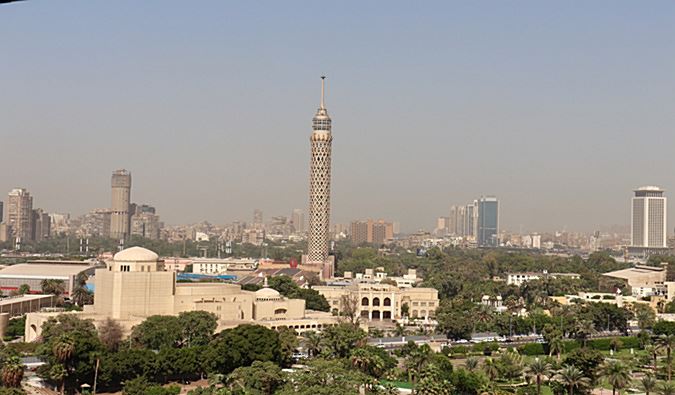
The Nile Valley and Delta region, home to iconic cities like Cairo and Luxor, experiences a more temperate climate. We will never forget our first morning in Cairo in early November. The crisp air and golden sunlight made exploring the bustling streets of Islamic Cairo comfortable, though by midday, we were grateful for the shade in Khan El Khalili bazaar.
The Nile River creates a narrow strip of fertile land, influencing local climate patterns. Humidity is higher in this region than in the desert, especially during the winter months.
The Red Sea Coast: Sun-Soaked Paradise
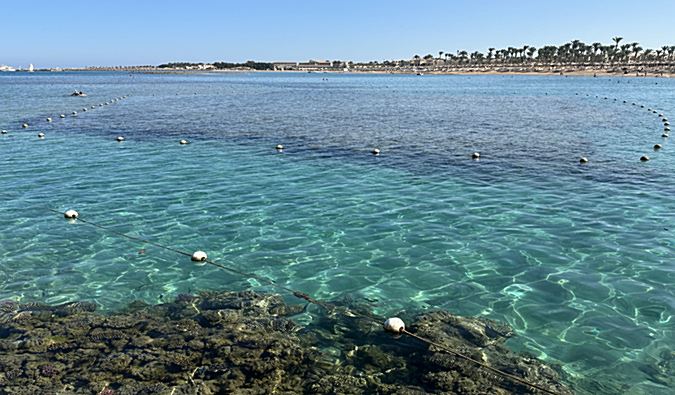
Popular resort towns like Hurghada, Marsa Alam and Sharm El-Sheikh along the Red Sea coast boast a climate perfect for beach holidays. Snorkelling in Hurghada in July was like swimming in bathwater – the sea was incredibly warm and clear. While the midday heat on land was intense, the early mornings were perfect for beach walks and the evenings were ideal for outdoor dining
The region enjoys over 3,800 hours of sunshine annually, making it one of the sunniest places on Earth.
Hurghada Sea Temperature By Month (2020-2023)
| HURGHADA SEA TEMPERATURE BY MONTH (2020-2023) | |||||
| Month | 2023 | 2022 | 2021 | 2020 | Average |
| Jan | 18.5°C | 17.8°C | 18.0°C | 18.2°C | 18.13°C |
| Feb | 19.0°C | 18.2°C | 18.5°C | 18.7°C | 18.60°C |
| Mar | 21.5°C | 20.8°C | 21.0°C | 21.2°C | 21.13°C |
| Apr | 24.0°C | 22.9°C | 22.7°C | 22.7°C | 23.08°C |
| May | 25.2°C | 24.5°C | 24.4°C | 25.9°C | 25.00°C |
| Jun | 27.7°C | 26.9°C | 26.5°C | 26.2°C | 26.83°C |
| Jul | 30.1°C | 28.6°C | 27.9°C | 28.2°C | 28.70°C |
| Aug | 29.4°C | 28.7°C | 29.5°C | 29.3°C | 29.23°C |
| Sep | 28.4°C | 28.2°C | 27.4°C | 29.2°C | 28.30°C |
| Oct | 27.3°C | 27.2°C | 26.3°C | 28.3°C | 27.28°C |
| Nov | 27.1°C | 25.5°C | 25.8°C | 27.2°C | 26.40°C |
| Dec | 25.3°C | 24.2°C | 24.0°C | 25.0°C | 24.63°C |
Marsa Alam Sea Temperature By Month (2020-2023)
| MARSA ALAM SEA TEMPERATURE BY MONTH (2020-2023) | |||||
| Month | 2023 | 2022 | 2021 | 2020 | Average |
| Jan | 19.0°C | 18.5°C | 18.7°C | 18.9°C | 18.78°C |
| Feb | 19.5°C | 19.0°C | 19.2°C | 19.4°C | 19.28°C |
| Mar | 22.0°C | 21.5°C | 21.7°C | 21.9°C | 21.78°C |
| Apr | 24.5°C | 24.1°C | 23.3°C | 24.0°C | 23.98°C |
| May | 25.6°C | 25.8°C | 25.2°C | 26.2°C | 25.70°C |
| Jun | 27.9°C | 28.5°C | 27.5°C | 27.1°C | 27.75°C |
| Jul | 30.7°C | 30.3°C | 29.2°C | 29.1°C | 29.83°C |
| Aug | 30.6°C | 29.9°C | 30.3°C | 29.7°C | 30.13°C |
| Sep | 29.7°C | 29.8°C | 29.1°C | 29.9°C | 29.63°C |
| Oct | 28.2°C | 28.6°C | 27.6°C | 28.7°C | 28.28°C |
| Nov | 27.5°C | 27.1°C | 27.3°C | 27.4°C | 27.33°C |
| Dec | 25.8°C | 25.9°C | 25.1°C | 25.1°C | 25.48°C |
JAZ MAKADI STAR & SPA: EXPECTATIONS vs REALITY
We put this hotel to the test. Our honest review compares promises with actual delivery. Get the full picture before you commit to your stay.
Upper Egypt: Ancient Sites in Intense Heat
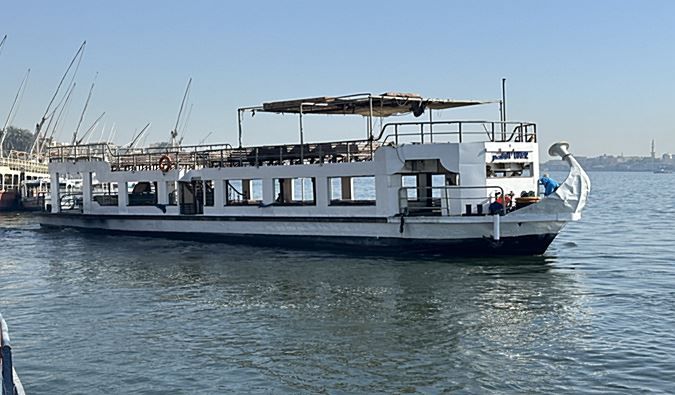
The southern region of Upper Egypt, home to many ancient wonders, experiences the country’s most extreme heat.
Exploring the Valley of the Kings in Luxor during August was therefore challenging but rewarding. The heat was intense, but starting early in the morning and carrying plenty of water made it manageable. The upside was having some of the tombs almost to ourselves!
The Sinai Peninsula: A Land of Extremes
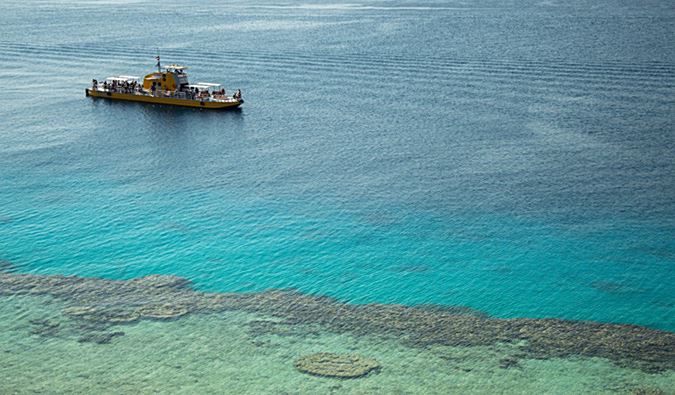
The Sinai Peninsula, bridging Africa and Asia, offers a fascinating study in climatic contrasts. We remember our December dive trip to Sharm El-Sheikh which was timed perfectly. The water was still warm enough for comfortable diving without a wetsuit, and the cooler air temperatures made sunbathing pleasant rather than sweltering.
Sharm El Sheikh Sea Temperature By Month (2020-2023)
| SHARM EL SHEIKH SEA TEMPERATURE BY MONTH (2020-2023) | |||||
| Month | 2023 | 2022 | 2021 | 2020 | Average |
| Jan | 18.0°C | 17.5°C | 17.7°C | 17.9°C | 17.78°C |
| Feb | 18.5°C | 18.0°C | 18.2°C | 18.4°C | 18.28°C |
| Mar | 21.0°C | 20.5°C | 20.7°C | 20.9°C | 20.78°C |
| Apr | 24.2°C | 23.2°C | 23.2°C | 23.4°C | 23.50°C |
| May | 25.4°C | 24.8°C | 24.8°C | 26.2°C | 25.30°C |
| Jun | 28.0°C | 27.4°C | 26.5°C | 26.5°C | 27.10°C |
| Jul | 30.4°C | 28.9°C | 28.2°C | 28.5°C | 29.00°C |
| Aug | 29.9°C | 29.2°C | 30.0°C | 29.9°C | 29.75°C |
| Sep | 28.9°C | 28.7°C | 27.7°C | 29.8°C | 28.78°C |
| Oct | 27.9°C | 27.9°C | 26.9°C | 28.9°C | 27.90°C |
| Nov | 27.7°C | 26.1°C | 26.4°C | 27.9°C | 27.03°C |
| Dec | 26.0°C | 24.7°C | 24.5°C | 25.4°C | 25.15°C |
Dahab Sea Temperature By Month (2020-2023)
| DAHAB SEA TEMPERATURE BY MONTH (2020-2023) | |||||
| Month | 2023 | 2022 | 2021 | 2020 | Average |
| Jan | 17.5°C | 17.0°C | 17.2°C | 17.4°C | 17.28°C |
| Feb | 18.0°C | 17.5°C | 17.7°C | 17.9°C | 17.78°C |
| Mar | 20.5°C | 20.0°C | 20.2°C | 20.4°C | 20.28°C |
| Apr | 23.5°C | 22.6°C | 22.2°C | 22.6°C | 22.73°C |
| May | 24.4°C | 24.0°C | 23.9°C | 24.8°C | 24.28°C |
| Jun | 26.4°C | 26.0°C | 25.1°C | 25.1°C | 25.65°C |
| Jul | 29.3°C | 27.4°C | 26.9°C | 26.8°C | 27.60°C |
| Aug | 29.1°C | 28.0°C | 28.8°C | 28.5°C | 28.60°C |
| Sep | 27.8°C | 27.7°C | 27.1°C | 28.7°C | 27.83°C |
| Oct | 26.7°C | 26.8°C | 25.7°C | 27.6°C | 26.70°C |
| Nov | 26.7°C | 25.4°C | 25.2°C | 26.8°C | 26.03°C |
Dry Desert Climate with Extreme Variations
The Sinai Peninsula is also characterised by its arid, desert climate, but with significant temperature fluctuations. Northern Sinai receives about 125 mm of precipitation annually, primarily in winter, while Southern Sinai experiences even less rainfall, contributing to its stark desert landscape.
Mountain Microclimates: A Cool Oasis
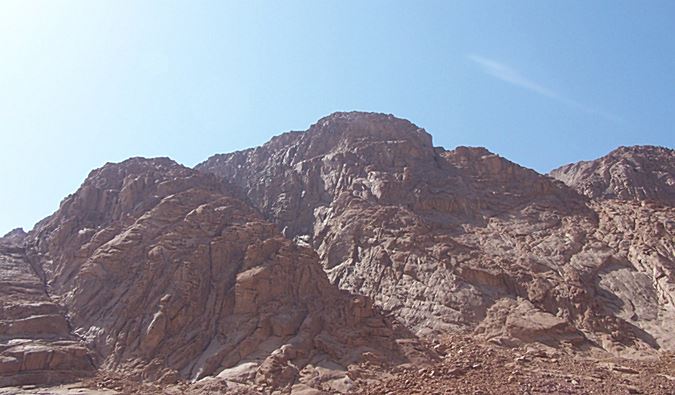
Climbing Mount Sinai for sunrise in March was an unforgettable experience. We started in the chilly pre-dawn hours, bundled up in layers, but by the time we reached the summit, the rising sun had warmed us considerably.
The mountainous regions of Sinai, particularly around Mount Sinai, offer a refreshing contrast to the lowland heat. The higher elevations experience significantly lower temperatures compared to the surrounding desert.
Climate Considerations for Travellers
Recent studies have shown concerning trends in the Sinai’s climate, including decreasing rainfall and rising temperatures, leading to severe droughts interspersed with unpredictable, heavy rainfall events. Understanding these trends is crucial for planning your visit.
The Western Desert: A Land of Extremes
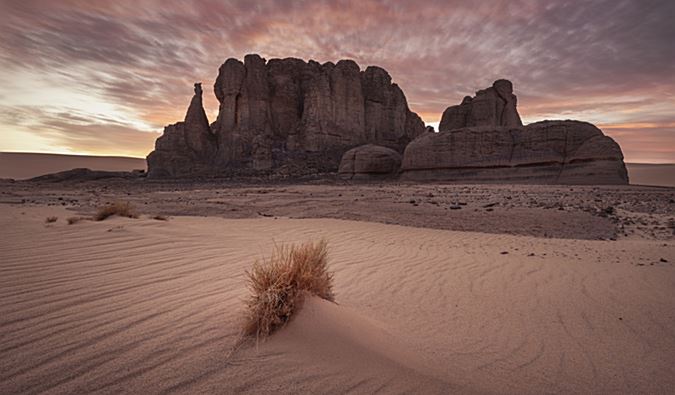
The Western Desert, encompassing the famous White and Black Deserts, presents a climate that challenges both nature and visitors alike.
Arid Desert Climate: A Study in Contrasts
The Western Desert epitomizes the classic desert climate, characterized by scorching days, chilly nights and minimal rainfall.
Unique Landscape Features
The Western Desert is home to some of Egypt’s most striking natural wonders:
- The White Desert: Known for its surreal, chalk-white rock formations.
- The Black Desert: Characterised by dark, volcanic hills and sand.
These landscapes, sculpted by wind and extreme temperature variations, offer a glimpse into the raw power of nature. Camping in the White Desert in January was a study in contrasts. The days were comfortably warm for hiking among the otherworldly rock formations, but as soon as the sun set, the temperature plummeted. We have never been so grateful for a thick sleeping bag!
Preparing for Your Desert Adventure
Visiting the Western Desert requires careful planning and preparation:
Hydration is Key
- Carry ample water supplies. The dry air can lead to rapid dehydration.
- Consider electrolyte supplements to maintain proper body function.
Sun Protection
- Use high-SPF sunscreen and reapply frequently.
- Wear light-coloured, loose-fitting clothing that covers your skin.
- Do not forget a wide-brimmed hat and UV-protective sunglasses.
Temperature Management
- Layer your clothing to adapt to temperature changes.
- Pack warm gear for chilly nights, even in summer.
Navigation and Safety
- Always travel with an experienced guide familiar with the terrain.
- Ensure your vehicle is desert-ready and carry emergency supplies.
Respect the Environment
- Follow ‘Leave No Trace’ principles to preserve this fragile ecosystem.
- Be mindful of water usage, as resources are scarce in this region.
Egypt Climate Overview: Year-Round Insights
Egypt’s climate varies significantly across its regions, as illustrated in the table in the “Egypt Weather: Decoding the Seasons” section.
STEIGENBERGER CORAYA BEACH: BEYOND THE FANCY FACADE
We have experienced it firsthand so you don’t have to guess. Our candid review explores every aspect of your potential stay. Make an informed decision for your next trip.
Managing Expectations: The Reality of Egyptian Weather
While general weather trends provide a helpful guide, remember that Egypt’s weather can be unpredictable, with occasional rainstorms even in dry regions and potential temperature fluctuations, especially in desert areas. Always check local weather forecasts a few days before your trip and again just before departing for each new destination within Egypt.
Packing Wisely for Diverse Conditions
Given Egypt’s varied climate, your packing list should accommodate different regions and activities:
Layering is Key
- Light, breathable fabrics for hot days.
- Warmer layers for cool evenings, especially in desert regions.
- A light waterproof jacket for unexpected showers.
Footwear
- Comfortable, sturdy shoes for exploring ancient sites.
- Sandals for beach areas.
- Closed-toe shoes for desert excursions.
Regional Considerations
- Coastal Areas: Pack swimwear and beach essentials.
- Upper Egypt: Focus on lightweight, sun-protective clothing.
- Desert Regions: Include warm layers for chilly nights.
Tip: Consider the cultural context when packing. Modest clothing is appreciated, especially when visiting religious sites.
Sun Protection: A Year-Round Essential
Egypt’s abundant sunshine necessitates vigilant sun protection throughout the year:
- High-SPF Sunscreen: Apply generously and reapply often, even on cloudy days.
- Protective Clothing: Long-sleeved shirts and trousers made from light, breathable fabrics.
- Accessories: Wide-brimmed hats and UV-blocking sunglasses.
- Timing: Plan outdoor activities for early morning or late afternoon when possible.
Remember: UV intensity can be deceptive, especially in cooler months or at higher altitudes.
SOLYMAR SOMA BEACH: DOES IT LIVE UP TO THE PROMISES?
Our thorough review puts this hotel’s claims to the test. From room comfort to service quality, get the unvarnished truth. Arm yourself with facts before you book.
🌪️ Preparing for Sandstorms (Khamseen) in Egypt
| Category | Preparation Tips |
| 📅 Timing | • Most common during spring in desert regions |
| 🔍 Stay Informed | • ☑️ Check weather forecasts regularly • ⚠️ Follow local warnings and advice |
| 🛡️ Protective Gear | • 😷 Pack a scarf or face mask for nose/mouth • 🕶️ Bring goggles or wrap-around sunglasses |
| 🏥 Health Precautions | • 💧 Stay well-hydrated • 👨⚕️ Consult doctor if you have respiratory issues |
| ✈️ Travel Plans | • 🗓️ Be flexible with your itinerary • 📄 Consider weather-related travel insurance |
| 🚨 Emergency Action | • 🏠 Seek immediate shelter if caught in a sandstorm • ⏳ Remain sheltered until conditions improve |
Key Facts About Khamseen Sandstorms
- Duration: Can last 3-4 days continuously
- Temperature: Often exceeds 40°C (104°F)
- Visibility: Severely reduced, making travel dangerous
- Global Occurrence: Common in arid regions worldwide
Health and Environmental Impact
- 🫁 Respiratory Risks: Can exacerbate breathing problems
- 👀 Eye Irritation: Fine dust particles may cause discomfort
- 🌍 Climate Change: May increase frequency and intensity of sandstorms
Safety First!
Remember: Proper preparation and following local guidelines are crucial for staying safe during a Khamsin sandstorm in Egypt. Always prioritize your health and safety when travelling in desert regions.
Embracing Egypt’s Climate Diversity
As we conclude our comprehensive exploration of Egypt’s climate, it is clear that this ancient land offers a rich tapestry of weather patterns and experiences. From the sun-drenched beaches of the Red Sea to the scorching sands of the Western Desert, and from the mild Mediterranean coast to the intense heat of Upper Egypt, the country’s diverse climate zones provide a unique backdrop for every traveller’s adventure.
Key Takeaways
Regional Variations
Egypt’s climate is far from monolithic. The country’s geography creates distinct climate zones, each with its own characteristics:
- The Mediterranean coast enjoys milder temperatures and receives the most rainfall.
- The Nile Valley and Delta experience hot summers and mild winters.
- Upper Egypt, including Luxor and Aswan, sees extremely hot summers and pleasant winters.
- The Red Sea coast offers warm temperatures year-round, ideal for beach holidays.
- The Western Desert epitomises the arid desert climate with extreme temperature fluctuations.
Seasonal Considerations
While Egypt is generally warm to hot year-round, there are notable seasonal differences:
- Winter (December-February) offers the mildest temperatures, ideal for sightseeing.
- Summer (June-August) can be extremely hot, especially in Upper Egypt and the desert regions.
- Spring and autumn provide a balance, with comfortable temperatures in most regions.
Sun Protection
Given Egypt’s abundance of sunshine, sun protection is crucial year-round, regardless of the season or region you are visiting.
Preparation is Key
From packing appropriate clothing to staying informed about potential weather events like sandstorms, being prepared ensures a more enjoyable experience.
Water Activities
The Red Sea’s warm waters make it a year-round destination for swimming and diving, with each season offering its own advantages.
Planning Your Egyptian Adventure
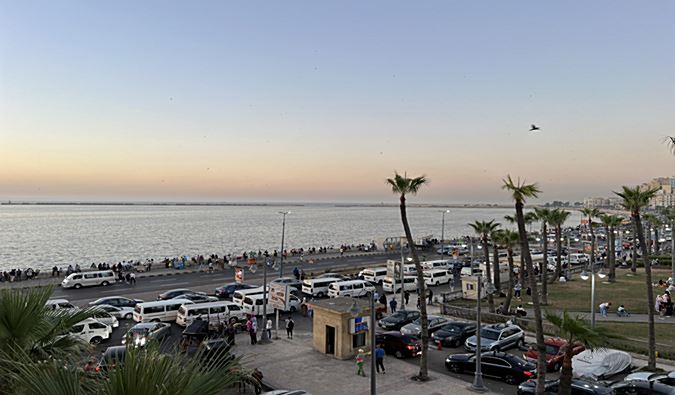
With this wealth of knowledge about Egypt’s climate diversity, you are now well-equipped to plan a trip that aligns perfectly with your preferences and desired activities. Consider the following as you map out your Egyptian odyssey:
- Cultural Exploration: If your primary interest is exploring Egypt’s ancient wonders, consider visiting during the milder winter months. This will allow you to comfortably spend hours exploring outdoor archaeological sites without the intense summer heat.
- Beach Holidays: For those seeking sun and sea, the Red Sea coast is inviting year-round. However, spring and autumn offer a particularly pleasant balance of warm water and comfortable air temperatures.
- Desert Adventures: To fully appreciate the majesty of Egypt’s deserts, plan your visit during the cooler months. Winter nights in the desert can be chilly, but the daytime temperatures are perfect for exploration.
- Nile Cruises: Spring and autumn are ideal for Nile cruises, offering comfortable temperatures for both on-board relaxation and onshore excursions.
- City Breaks: If you are planning to explore Egypt’s vibrant cities like Cairo or Alexandria, the winter months provide the most comfortable conditions for wandering through bustling streets and markets.
IS QAITBAY CITADEL WORTH YOUR TIME IN ALEXANDRIA?
Our honest review cuts through the tourist hype. Discover if this historic fortress lives up to expectations. Get real insights before planning your visit.
Remember, each season in Egypt has its unique charm. Whether you are marvelling at the play of light on ancient monuments, diving in crystal-clear waters, or watching the sun set over endless dunes, Egypt’s diverse climate ensures that there is always something extraordinary to experience.
As you plan your journey, embrace the diversity that Egypt’s climate offers. Let the rhythm of the seasons guide your itinerary and prepare to be amazed by the ways in which weather and climate have shaped this timeless land. From the lush Nile Delta to the stark beauty of the Western Desert, Egypt’s climatic tapestry is an integral part of its allure, waiting to be discovered by the intrepid traveller.
Your Egyptian adventure awaits – rich in history, bathed in sunlight, and as diverse as the climate that has shaped it for millennia.
Bon voyage!
Useful Online Resources
As we conclude our comprehensive guide to Egypt’s climate, it is essential to equip you with reliable tools for staying informed about weather conditions during your trip. While our guide provides a solid foundation, real-time weather information is crucial for day-to-day planning. Here are some reputable online resources to help you stay up-to-date with Egypt and its weather:
BBC Country Profile
For a broader overview of Egypt, including its climate and other essential information, you can visit the country profile.
Egyptian Meteorological Authority
The official source for weather information in Egypt:
- Website: Egyptian Meteorological Authority
- Features:
- Official weather forecasts for all regions of Egypt
- Climate data and statistics
- Severe weather warnings and alerts
- Available in Arabic and English
AccuWeather (Egypt)
A user-friendly global weather service with detailed forecasts for Egypt:
- Website: AccuWeather Egypt
- Features:
- Hourly and daily forecasts for major Egyptian cities
- Extended 15-day forecasts
- Satellite maps and radar
- Travel-specific weather information
Windy (Egypt)
An interactive weather map service, excellent for visualising weather patterns:
- Website: Windy Egypt
- Features:
- Real-time wind, rain, and temperature maps
- Customisable layers for various weather parameters
- Forecasts for specific locations within Egypt
- Particularly useful for monitoring sandstorm conditions
These resources complement the information provided in our guide, allowing you to make informed decisions based on current weather conditions and forecasts. Whether you are planning a desert expedition, a Nile cruise, or a beach holiday on the Red Sea, these tools will help you prepare appropriately and make the most of Egypt’s diverse climate.
Remember, while online resources are invaluable, it is also wise to consult local sources once you are in Egypt. Hotel staff, tour guides, and local residents often have invaluable insights into short-term weather patterns and how they might affect your plans. By combining the knowledge from our comprehensive guide with these real-time resources, you will be well-equipped to navigate Egypt’s fascinating climate diversity. From the sun-soaked temples of Upper Egypt to the breezy Mediterranean coast, you are now prepared to embrace whatever weather your Egyptian adventure may bring. Safe travels and may your journey be filled with unforgettable experiences, whatever the weather!
EGYPT E-VISAS: YOUR FOOLPROOF GUIDE TO HASSLE-FREE ENTRY
Avoid common pitfalls and scams with our step-by-step instructions. Learn how to secure your legitimate Egypt e-visa quickly and safely. Essential reading for stress-free travel planning.
Conclusion: Planning Your Dream Trip to Egypt
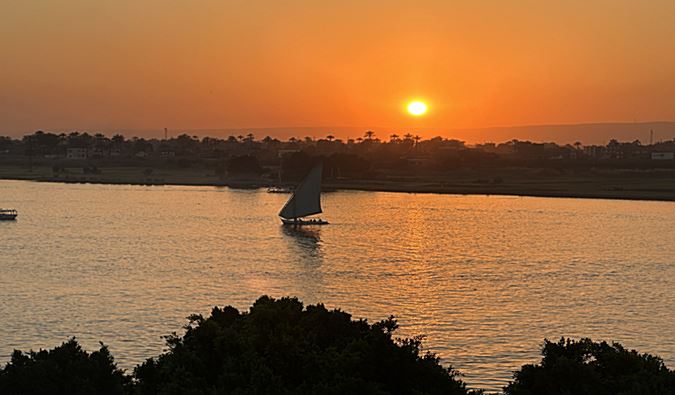
From the sun-kissed beaches of the Red Sea to the ancient wonders of Luxor, Egypt offers a diverse tapestry of experiences for every traveller. As you have discovered in this guide, the country’s climate varies dramatically from region to region and season to season.
By understanding Egypt’s unique weather patterns and planning your trip accordingly, you can ensure a comfortable and unforgettable adventure. Whether you dream of exploring ancient tombs, cruising down the Nile, or diving among vibrant coral reefs, timing your visit to coincide with the ideal weather conditions will enhance every aspect of your journey.
To help you plan your dream trip to Egypt, we have compiled a wealth of resources on our site, covering everything from visa information and currency exchange to detailed city guides, packing tips, and insightful articles on specific activities and attractions.
Start exploring our Egypt travel guides today and let us help you turn your Egyptian dreams into a reality!
Egypt is calling. Will you answer?
Stay Connected with Us
- Subscribe to our newsletter for exclusive updates and insider tips
- Follow us on Facebook, Instagram, YouTube and other social media channels (see the ‘Follow Us’ section below for a full list) for stunning visuals and real-time insights
Your feedback is invaluable. Share your thoughts, questions, or personal stories with us. Your insights enrich our community and help us refine our guidance for future explorers.
Why Trust Our Reviews
Our mission was born from personal experiences with misleading travel information. We have faced disappointments due to inaccurate reviews and we are committed to ensuring you do not encounter the same. Our reviews and guides are:
- Objective: Based on first-hand experiences
- Thoroughly researched: No stone left unturned
- Unbiased: No affiliations with hotels, airlines or attractions
Our sole aim is to equip you with accurate information for informed travel decisions. As you stand on the threshold of your Egyptian adventure, remember that you are not just planning a holiday – you are preparing for a journey that could redefine your understanding of this ancient wonder.
Whether you seek:
- Ancient Wonders
- Sun-soaked beaches
- Nile Cruises
- Desert Adventures
Egypt enchants with its timeless treasures.
FAQs: Addressing Common Concerns about Egypt’s Weather
As we wrap up our comprehensive guide to Egypt’s climate, let us address some of the most frequently asked questions travellers have about weather conditions in this fascinating country.
When is the best time to visit Egypt for optimal weather?
The best time to visit Egypt for comfortable weather is generally from October to April. During these months, temperatures are milder, making it ideal for exploring ancient sites and enjoying outdoor activities. Specifically:
- October to November and February to April offer pleasant temperatures and fewer crowds.
- December to February is peak tourist season with the most comfortable temperatures but expect larger crowds.
You can check what to expect in different parts of Egypt by looking at out summary table here.
How hot does it get in Egypt during the summer?

Summer in Egypt can be extremely hot, especially from June to August:
- Temperatures can reach up to 40°C (104°F) or higher in many parts of the country.
- In southern cities like Aswan, temperatures can soar to 50°C (122°F).
- Coastal areas like Alexandria tend to be slightly cooler but still very warm.
What is the best time to visit the Red Sea for swimming and diving?
The Red Sea is a year-round destination, but the best times depend on your preferences:
- March to May and September to November offer ideal conditions with warm water and comfortable air temperatures.
- Summer months (June to August) provide the warmest water temperatures, perfect for swimming, but air temperatures can be extremely hot.
- Winter (December to February) is still good for diving, with water temperatures around 21-22°C, though air temperatures are cooler.
What should I pack for a trip to Egypt during different seasons?
Packing for Egypt varies by season:
- Winter (December-February):
- Light layers for daytime
- Warmer clothes for evenings
- A light jacket or sweater
- Spring/Autumn (March-May, September-November):
- Lightweight, breathable clothing
- Sun protection (hat, sunglasses, sunscreen)
- A light layer for cooler evenings
- Summer (June-August):
- Very light, loose-fitting clothes
- Strong sun protection
- Swimwear for coastal areas
Regardless of season, always pack comfortable walking shoes and modest clothing for visiting religious sites.
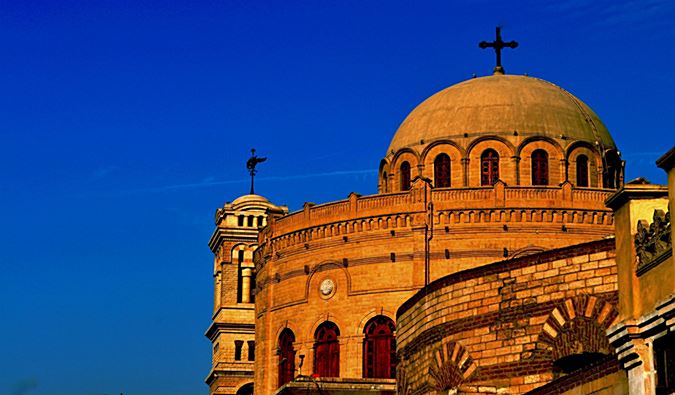
Is it safe to travel to Egypt during the Khamaseen winds?
The Khamaseen winds, which can cause sandstorms, typically occur between March and May:
- While not inherently dangerous, they can cause discomfort and reduced visibility.
- It is generally safe to travel during this period but be prepared for potential disruptions.
- Follow local advice and weather warnings.
- Pack a scarf or face mask to protect against dust if travelling during this time.
Does it ever rain in Egypt?
Egypt is predominantly a dry country, but some rainfall does occur:
- Coastal areas, especially Alexandria, receive the most rain, mainly in winter months
- Cairo and southern regions see very little rainfall, often less than 25mm annually
- Some years may pass with virtually no measurable rainfall in Upper Egypt.
Are there any weather-related health concerns I should be aware of?
The main weather-related health concerns in Egypt are:
- Heat exhaustion and sunstroke: Particularly during summer months.
- Dehydration: Due to the dry climate, staying hydrated is crucial year-round.
- Respiratory issues: Dust and sand can exacerbate existing conditions, especially during sandstorms.
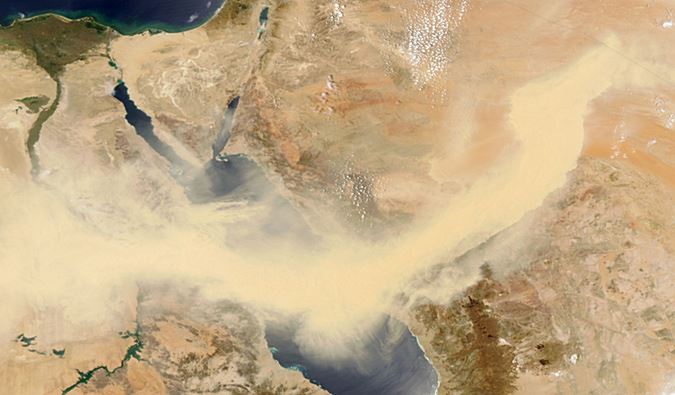
Always consult with your doctor before travelling, especially if you have pre-existing health conditions. By understanding these common weather-related concerns, you can better prepare for your Egyptian adventure, ensuring a comfortable and enjoyable experience regardless of when you choose to visit. Remember, each season in Egypt offers its own unique charm and opportunities for exploration.
SMART MONEY TIPS FOR YOUR EGYPTIAN ADVENTURE
Navigate currency, avoid fees, and spend wisely. Our guide ensures a smooth financial journey through the land of pyramids.
Have more questions about Egypt’s weather or planning your trip? Leave a comment below, and we will be happy to help!


